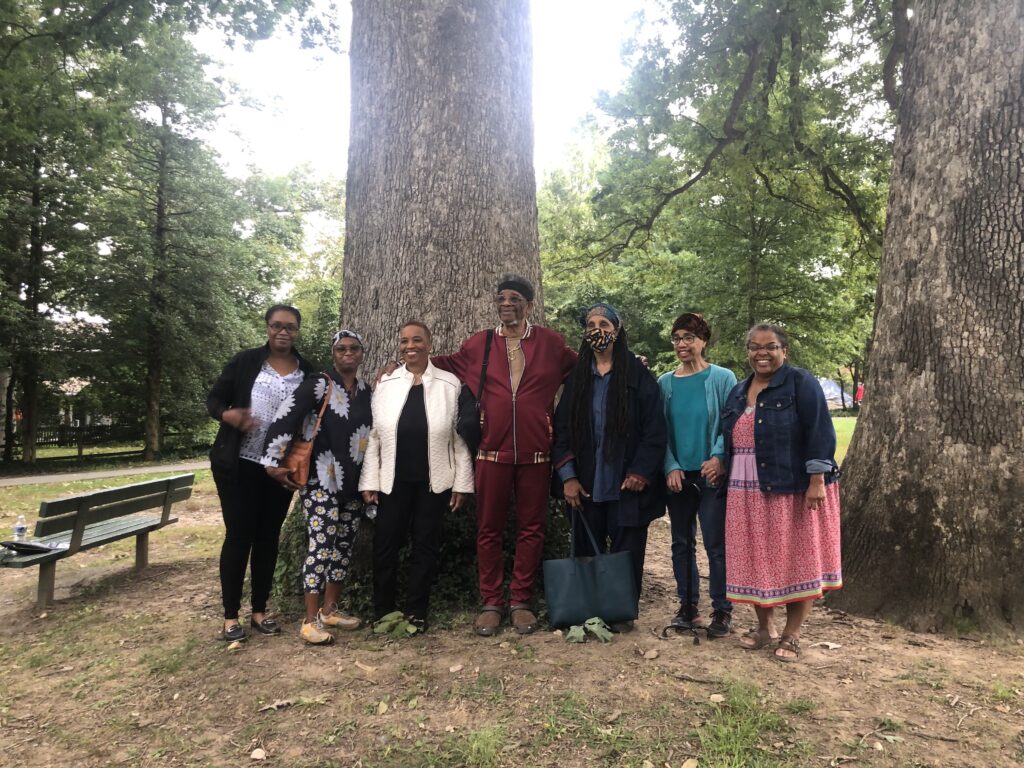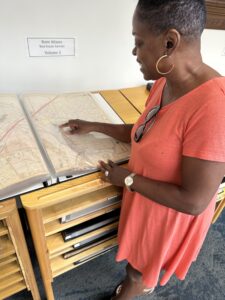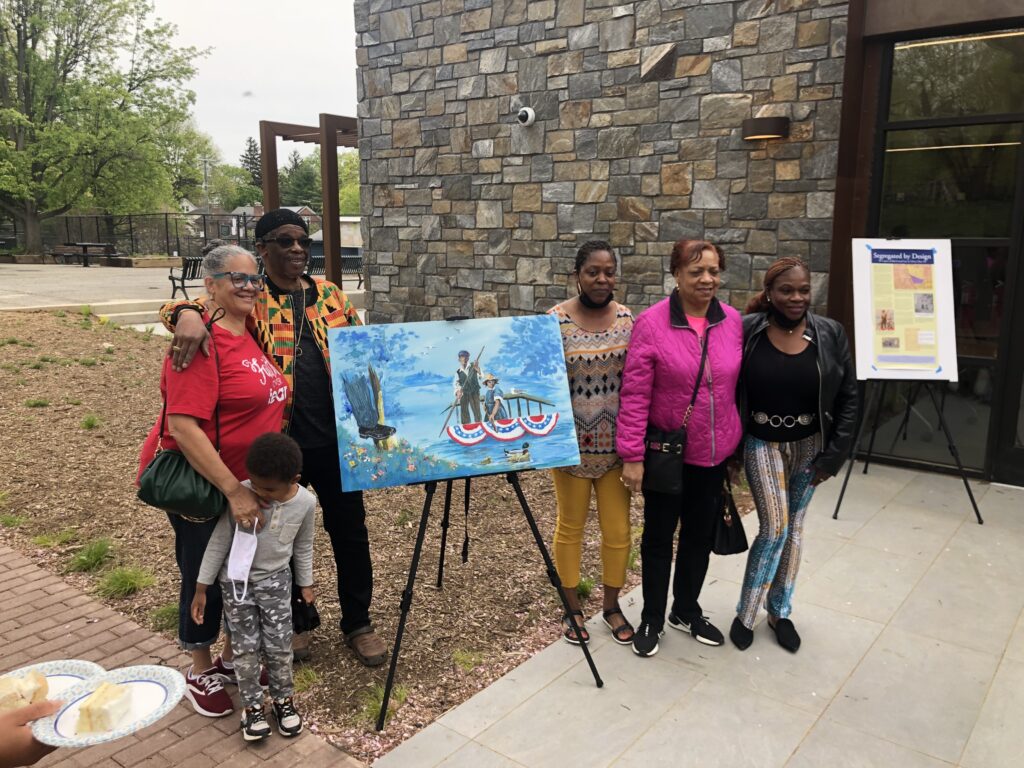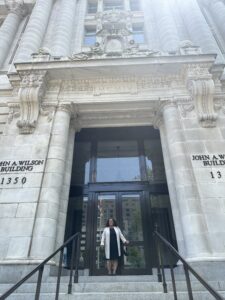
The history of the District of Columbia, in many ways, is one that has been shaped by a pattern of land dispossession. As far back as the first encounters between colonial settlers and the indigenous tribes that called this area home, land—and who has the right to claim it—has been used as the literal and symbolic battleground to discern the values that influence the capital and the nation it represents. Understanding the patterns of land dispossession that shaped the city helps us to understand how the conditions that we navigate today came to be.
This is the fundamental lesson that lies at the heart of the Black Broad Branch Project—a public history project that aims to illustrate how the forcible dislocation of an African American community can help us understand how the current economic and demographic distributions in the District came to be.

I first became involved with the project in 2021 as a student of Dr. Amanda Huron at the University of the District of Columbia. Dr. Huron’s “Black Land Loss in Washington, DC” class provided an entry point into the broader history of land dispossession in the nation’s capital and to the specific story of how Chevy Chase DC was developed. My contribution to the project was to draft what became the final report for the two-semester initiative. This happened to be the last set of credits that I needed to graduate from the Political Science Program. That summer, as I was exploring a professional pathway into the local humanities arena, Dr. Huron tapped me to take on the implementation of the recommendations in the final report. I agreed to take the batton, if I could do it in collaboration with my friend and fellow classmate, Corey Shaw Jr. And so, the Black Broad Branch Project was formed. Since then, we’ve worked with the descendant-narrators to bring their definitions of redress to fruition for the actions against their ancestors.
When I joined the DC History Center as the full-time manager of community engagement, we saw an opportunity for the organization to act as an incubator for the Black Broad Branch Project. At the DC History Center, our mission is to deepen understanding of the city’s past to connect, empower, and inspire. This project aligns precisely with the type of work the Center wants to do and support. For the project, finding a home at the DC History Center has afforded new opportunities to increase public understanding of the history of the Black Broad Branch community and the interruption of Black placemaking in DC over time.
The History Behind the Project
The project traced present-day descendants from two families that were rooted in what was then called Dry Meadows, on two neighboring plots off of Broad Branch Road in Northwest DC. These two families were living on family-owned land from the 1840s until the 1920s, when they were forcibly dislocated through the weaponization of practices such as the process of eminent domain and the use of racially-restrictive covenants. At the time, the National Parks & Planning Commission (today’s National Capital Planning Commission) implemented the process of eminent domain to empty their lots and make way for the building of Lafayette Elementary School and its surrounding park. Both were intended to be white-only spaces.

We used traditional methods of historical research, including archival and genealogical research, along with oral history methods, to enact recommendations for redress as imagined by the descendants who have been engaged in this work. The research team conducted 16 oral histories which were used as a way to document the generational implications that both families suffered after being forced off their land and separated from their familial networks. These interviews also served as a space to ask the descendant-narrators to define what redress would mean to them. Their definitions helped the team create a strategic action plan which has been dubbed the ACE model for repair: Acknowledgement, Compensation, and Education. Each of these main categories includes a set of tangible actions for repair. Enacting these actions is the work that Corey Shaw Jr. and I are engaged in on behalf of the project.
The Future of the Project

Over the past year, with a home at the DC History Center, the project has been able to grow in reach and impact. In partnership with Georgetown University’s Education, Discovery, Inquiry, and Justice Program, we developed curriculum materials based on the history illustrated in the project and in accordance with DCPS social studies standards. Through these materials, we’ve introduced DC area educators to the history and pedagogical approach used by the project, including through our professional development program Teach the District and through sessions hosted in partnership with DC Public Schools and the Office of State Superintendent of Education (OSSE). The Project has also been asked to speak to the DC Council and at events hosted as part of the United Nations Second Session of the Permanent Forum on People of African Descent in May 2023.
Because it is important to us that students, researchers, and members of the DC community can access this history, the DC History Center is working to give the transcripts of the original 16 oral histories a home in our collection. We are in the process of engaging with the eight descendant narrators who provided the original oral histories to explore this path. This process will allow their direct words and definitions for redress to be accessible to the public.
For me personally, this project has deeply influenced my public history practice and approach toward community engagement. First, it is our obligation to engage with the real people affected by past harms. If the real people who we engage with—both as institutions and practitioners—have not been involved in building the structure/program, then the product will be doomed from the start. I also have learned that this work is most impactful when it goes at the speed of trust, which does not always align with fiscal calendars and project timelines. We have to be flexible and willing to redirect in order to be in line with the needs of our community members, even, or perhaps especially, when it challenges our institutional structures. That is when we know the work is fundamentally rewiring how our organization works with community partners.
I feel lucky that this approach is fully supported by the leadership and staff at the DC History Center. This past year solidified a vision for these types of neighborhood-based history projects. I look forward to continuing to explore our local history, through the Black Broad Branch Project’s efforts in Chevy Chase DC and Georgetown, as well as our work in Hillcrest, Woodridge, and Mt. Pleasant.
 Mariana Barros-Titus is the community engagement manager at the DC History Center. Mariana joined the organization in May 2023 and is the first to hold this newly created position. Prior to this role, she served as the DC History Center’s inaugural Latino/a/x Community Outreach Fellow. She also created a Latino/a/x research guide as an independent study project while attending the University of the District of Columbia. Mariana earned a BA in Political Science from the University of the District of Columbia, and her work is primarily focused on analyzing and dismantling barriers to system literacy for historically underrepresented communities. She is passionate about informing public discourse through the sharing of community histories and individual life histories, which can serve as powerful reflections of governance in practice.
Mariana Barros-Titus is the community engagement manager at the DC History Center. Mariana joined the organization in May 2023 and is the first to hold this newly created position. Prior to this role, she served as the DC History Center’s inaugural Latino/a/x Community Outreach Fellow. She also created a Latino/a/x research guide as an independent study project while attending the University of the District of Columbia. Mariana earned a BA in Political Science from the University of the District of Columbia, and her work is primarily focused on analyzing and dismantling barriers to system literacy for historically underrepresented communities. She is passionate about informing public discourse through the sharing of community histories and individual life histories, which can serve as powerful reflections of governance in practice.